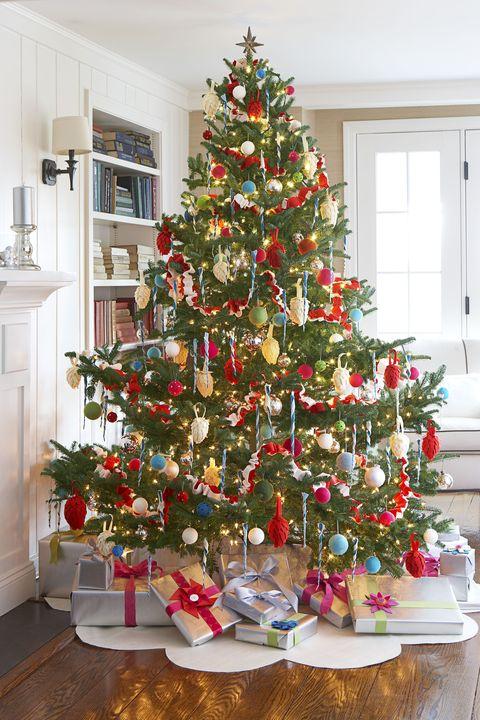Origins of the Christmas Tree

The custom of the Christmas tree developed in early modern Germany(where it is today called Weihnachtsbaum or Christbaum or “Tannenbaum”) with predecessors that can be traced to the 16th and possibly 15th century, in which “devout Christians brought decorated trees into their homes”.
A Christmas tree is a decorated tree, usually an evergreen conifer such as spruce, pine, or fir or an artificial tree of similar appearance, associated with the celebration of Christmas.
In 1882, the first Christmas tree was lit using electricity. Edward Johnson lighted up a Christmas tree in New York City with eighty small electric light bulbs. It should be noted that Edward Johnson created the first string of electric Christmas lights that were then mass produced around 1890.
Christmas lights are lights used for decoration in celebration of Christmas, often on display throughout the Christmas season including Advent and Christmastide. The custom goes back to when Christmas trees were decorated with candles, which symbolized Christ being the light of the world; these were brought by Christians into their homes in early modern Germany.
The tradition of Christmas trees and Christmas Ornaments is a much disputed one what with several theories about their origin doing the rounds for a long time. The most popular theory holds that the tradition was started by a monk who came to Germany in the 7th/8th century to preach. It is said that this monk was Saint Boniface, the Apostle of the Germans. According to history, the saint was the first one to bring a fir tree to the German people to decorate, for he claimed that its triangular shape represented the Holy Trinity – God, his son Jesus, and the Holy Spirit. The tradition was lapped up by the devout Germans who started decorating the Christmas tree in a liturgical way with simple, white candles. This however, changed in the 15th century when ornaments began to be incorporated into the Christmas decorations in Germany. In Latvia, circa 1510, a fir tree was decorated with roses which was associated with the Virgin Mary. This event is often hailed as the pioneer of modern Christmas decorations.
As time passed, the Christmas tree traditions gradually found their way into English homes where the decorations began to be more ornate what with glass beads and hand-sewn snowflakes being used to adorn the trees. With the arrival of the 1800’s, the Christmas tree tradition eventually began to invade the American homes who would string long strands of cranberries or popcorn to encircle their trees. In the UK, imaginative ornaments of lace, paper or other items showed the ingenuity and skill of their makers. Small newspaper scraps or magazine illustrations also began to be used in the family Christmas tree decorations. Small gifts were other items that began to be hung on the trees, sometimes contained in little handcrafted baskets, nestled in the crook of a branch or just suspended by a small piece of thread. In fact, so much of decorative items began to be used during this period that with each passing year it became increasingly difficult to see the tree beneath the ornaments.

